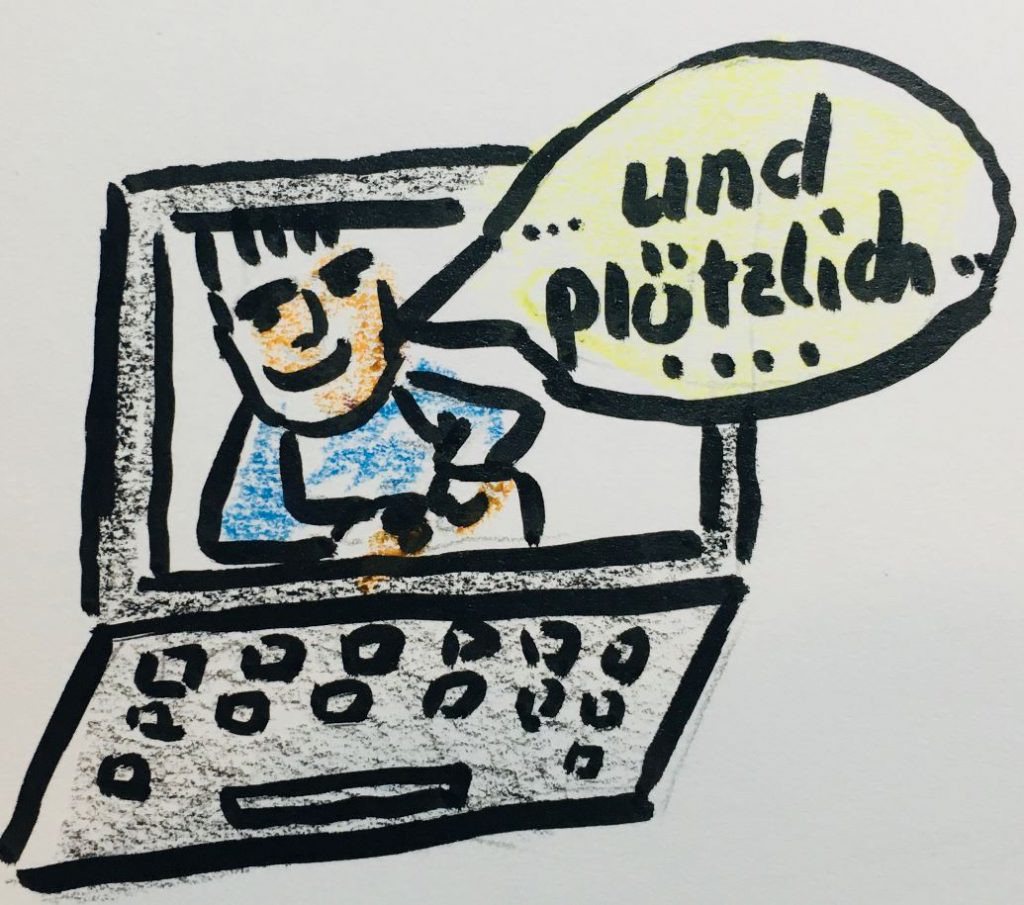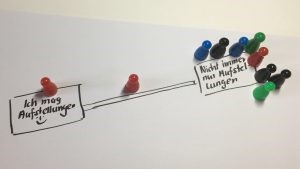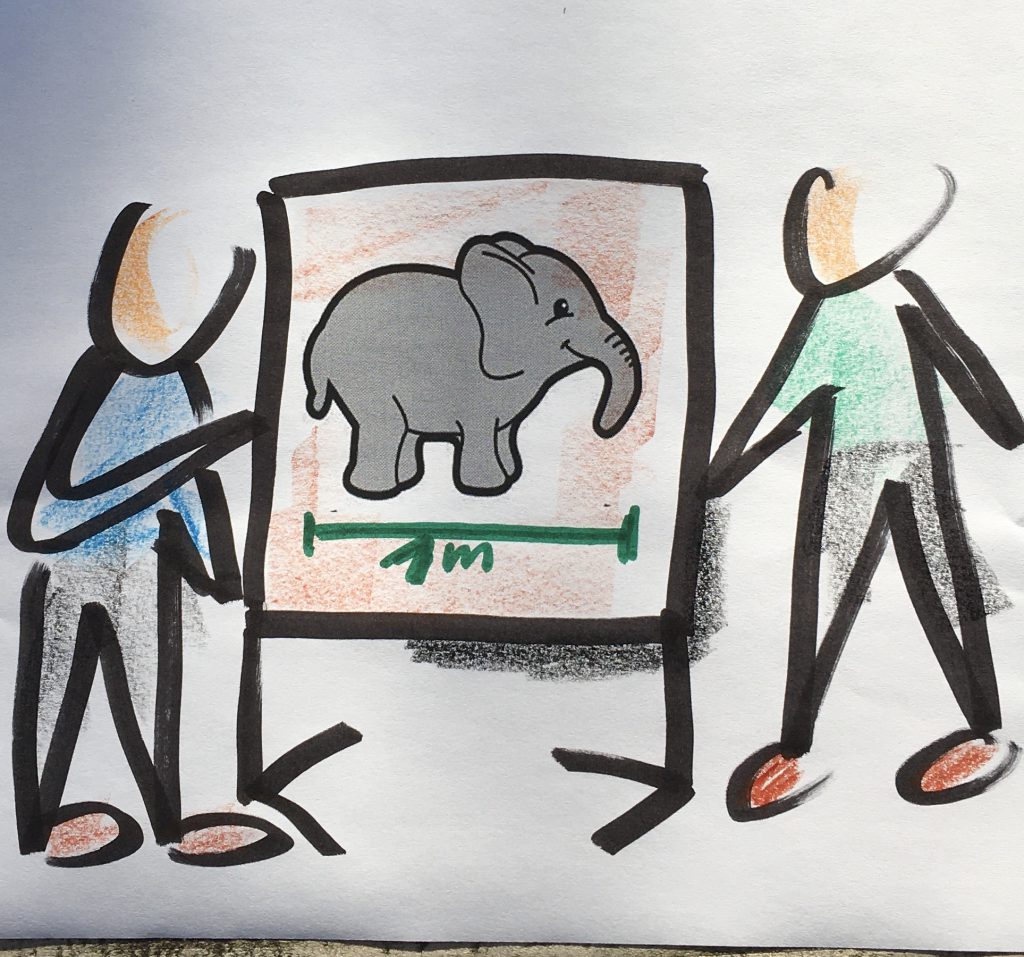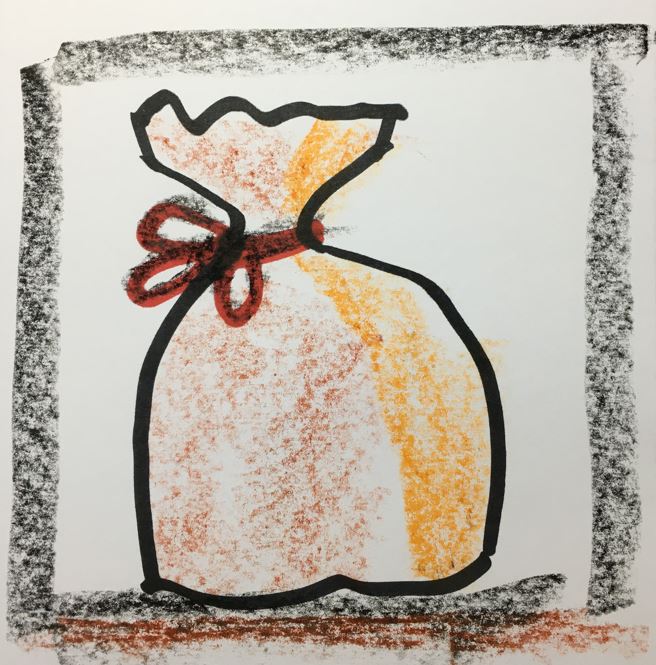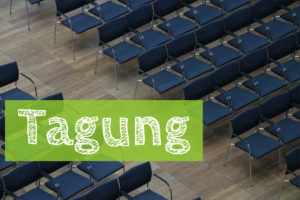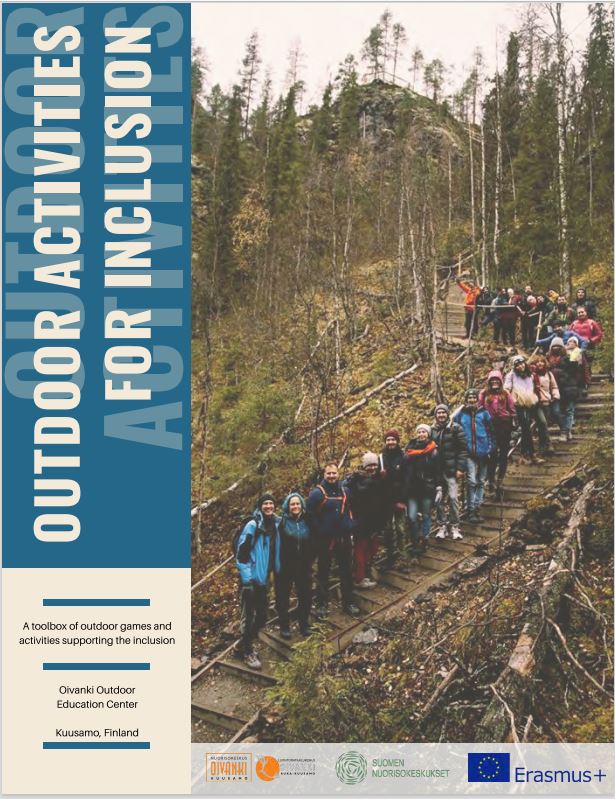… bis zum nächsten Jahr!
2021 neigt sich dem Ende zu, das letzte REFAK-Seminar ist bereits abgeschlossen – wir vom REFAK-Team machen Winterpause und wünschen allen Teilnehmer:innen und Blog-Leser:innen entspannte und erholsame Feiertage!
Archiv der Kategorie: Allgemein
#mm: Storytelling online
Stories and examples for lecture, training and seminar
On 14 October 2020, the seminar „Storytelling in trade union education work“ took place for the second time. This time online and therefore also shortened in time. The big question for the trainers Michael Ziereis and Ulli Lipp: Storytelling, is it also possible online? How much is lost when we hear the narrators through the speaker and see them as a section of a picture?
Weiterlesen#mm: Methods with distance – Part 2
Lineups with avatars
Constellations are an extremely popular method that many trainers like to use often – so often that they even made it into our series „Annoying Methods“.
In Corona times, however, constellations cannot be done anyway – unless perhaps the whole group goes outside and everyone takes their baby elephants with them. So what to do?
#mm: Methods with distance – Part 1
Classroom training is starting up again. Now, methods are needed in which we don’t get too close to each other and in which the risk of infection is also minimized in other ways. There is much more to it than just a frontal lecture. Diversity of methods and especially the activation of the participants are also important in times of a pandemic! Here are our experiences after practical tests.
Weiterlesen#mm: Tips for closing
Designing the end of trainings, courses and seminars
Conclusions of seminars & co. are a key point in the learning process. They also determine whether participants leave the seminar room full of energy and encouragement or get up from their computers after a webinar. We have compiled tips and suggestions: How do I close the bag?
WeiterlesenKEBÖ-Jahrestagung 2021
Erwachsenenbildung bedeutet Verantwortung
Unter dem Titel „Erwachsenenbildung bedeutet Verantwortung“ findet die diesjährige KEBÖ-Jahrestagung statt.
Weiterlesen#dimi_06: Learning targets
Why learning goals create orientation
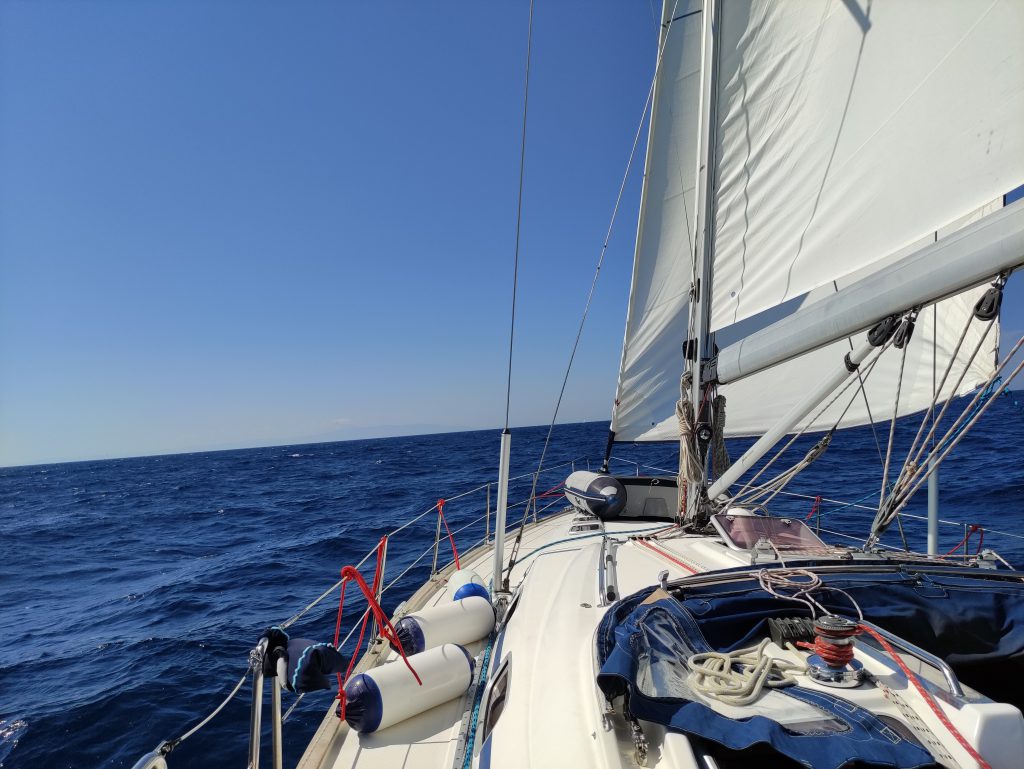
Photo: Margret Steixner
Welcome back from the summer break. Which travel destination did you choose? The local mountains and lakes or did the sea call to you, as it did to me? Wherever the destination was, it was certainly formative for your entire holiday planning. The same goes for learning goals.
Weiterlesen#dimi_05: Training design
Why planning and quality go hand in hand

„Planning is half the battle“ is a saying that also applies to the matter of training design. In order to be able to successfully design learning processes, I make numerous preliminary considerations that help me as a trainer to obtain clarity in advance about the content, the methods, but also the group and the necessary spatial conditions.
WeiterlesenMethoden Toolbox für Soziale Inklusion
Unser REFAK Absolvent Michael Scheuchenegger ist auch in der internationalen Jugendbildung tätig.
Dabei entstand im Rahmen des Erasmus+ Projekts “outdoor activities for inclusion” gemeinsam mit Teilnehmer*innen aus neun europäischen Ländern, ein praktisches Handbuch mit erlebnispädagogischen Methoden aus ganz Europa.
#dimi_04: Trade union learning
What education can do for empowerment
After #dimi_03 dealt with the topic of learning in general, #dimi_04 is dedicated to the question of what we understand by learning in trade union education work and how we as trainers can specifically promote and support it.
You will learn more about the competences that should be developed in trade union learning settings and how these requirements affect the didactic principles. At the end, there are also some ideas for methods and explanations on how the application of these methods can make even more sense.
Weiterlesen

